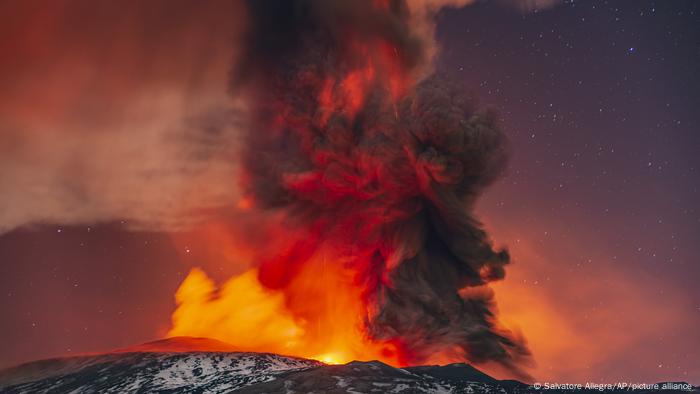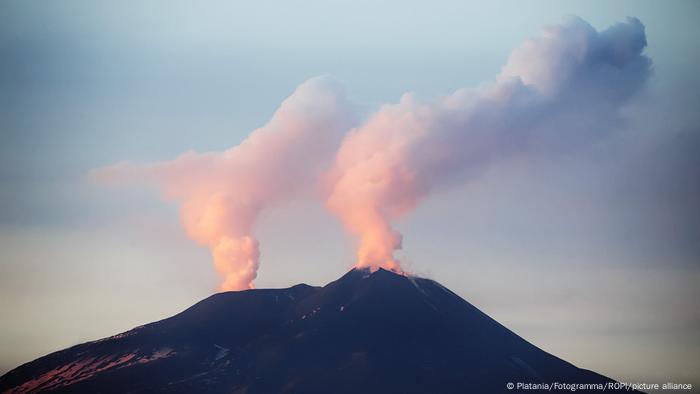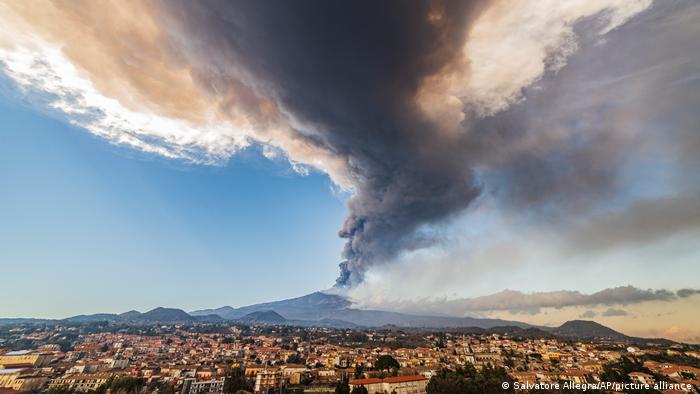Italy: New Etna eruption spews ash and closes airport
Mount Etna, one of Europe's most active volcanoes, belched a pillar of smoke 12 kilometers high. The incident follows a spectacular eruption just days prior.
A tower of volcanic ash rose miles into the skies above Sicily, blanketing the countryside and
disrupting air traffic
Mount Etna blasted a massive 12-kilometer-high (7.5-mile) pillar of volcanic ash into the sky over the Italian island of Sicily on Monday.
Scientists from Italy's National Institute of Geophysics and Volcanology (INGV) in Catania say activity centered on a lava flow on the mountain's southeast slope.
Ash from the eruption blanketed nearby towns according to Italy's civil protection agency but there have been no immediate reports of injuries or property damage.
Earlier Monday, authorities issued a warning for aircraft in the area.
Vincenzo Bellini international airport in nearby Catania closed at lunchtime Monday due to the eruption, the airport tweeted. Limited air traffic has since resumed but will be "restricted until the end of the #Etna emergency," the tweet said.
Why did Etna erupt?
Mount Etna sits on a 1,190 square km (459 square miles) base situated over the convergence of the African and Eurasian continental plates. It is one of Europe's tallest and most active volcanoes.

In Greek and Roman mythology, Etna was known as the home of Vulcan, arms supplier to the gods
Etna's volcanic activity has been well-documented throughout history. Perhaps its most-devastating eruption occurred in 1669, when lava consumed dozens of villages and proceeded to bury large sections of Catania, the biggest city in the eastern part of the island.
Earlier this February, a particularly powerful eruption spewed geysers of lava rocketing forth into the night sky over Sicily and the mountain has remained highly active ever since.
INGV scientists have recorded a gradual uptick in seismic tremors caused by escaping gases, which they say could be an indication that Etna is heading toward another spectacular burst of fiery lava fountaining, or paroxysmal volcanic activity.
Experts at INGV believe the eruption was caused by an accumulation of magma, noting that the same situation occurred about a year ago, albeit with more magma buildup. By October, Etna had erupted another 50 times.

Constant seismic activity have created new fractures in the mountain, opening new craters
js/wd (AFP, AP, dpa)

No comments:
Post a Comment